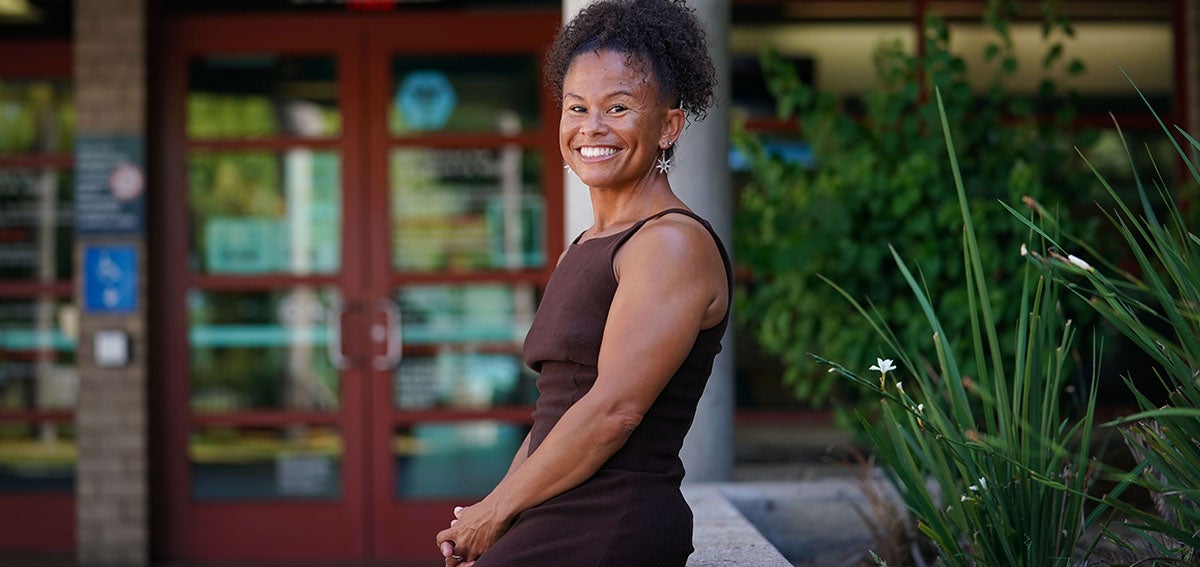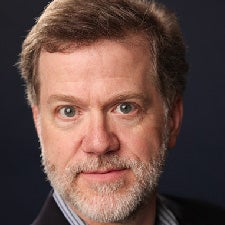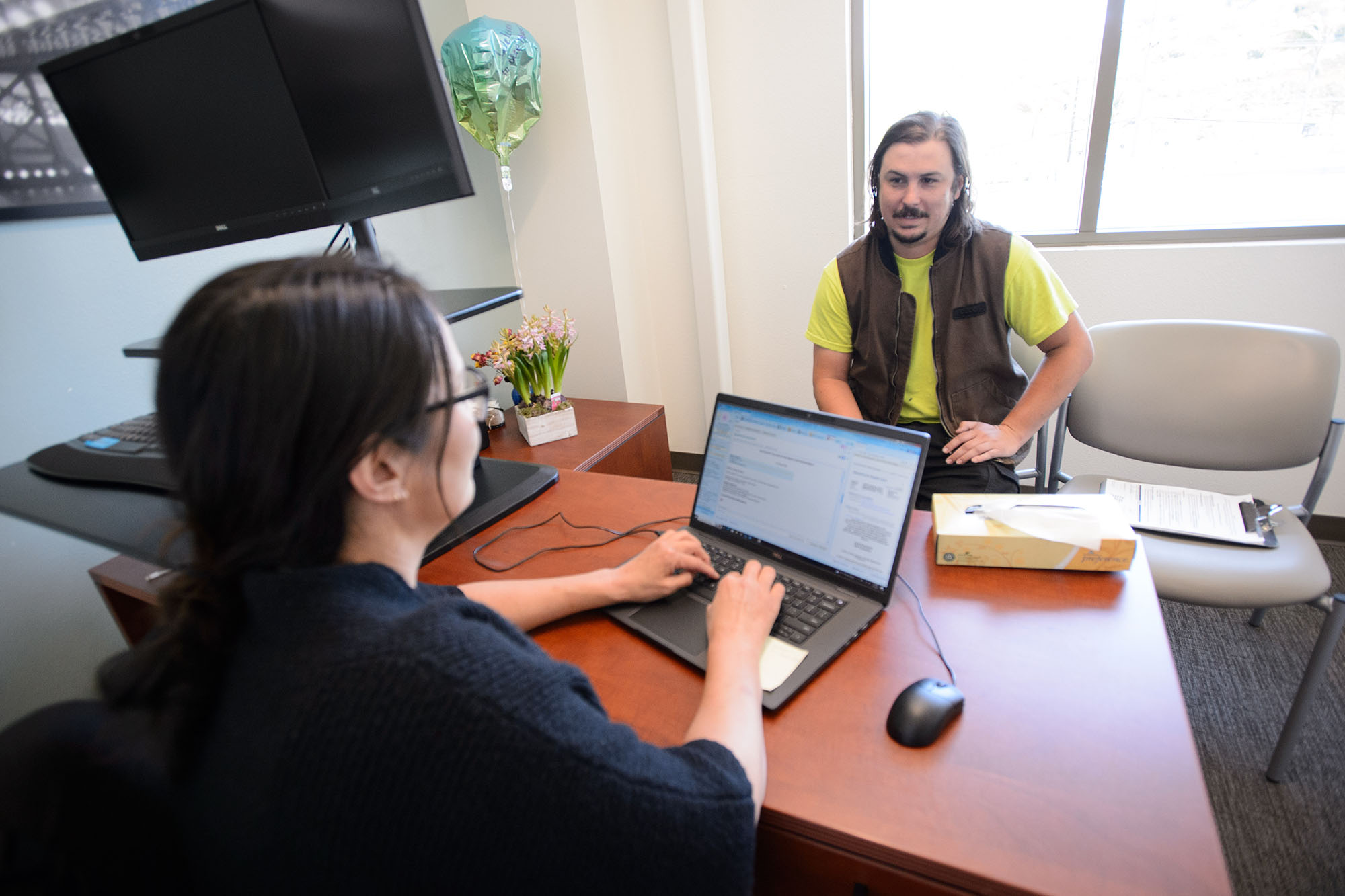|
Getting your Trinity Audio player ready…
|

When it comes to addressing behavioral health and social needs, Los Angeles County is going big. Its Department of Health Services (DHS) is in the process of executing an ambitious plan to integrate behavioral and social health into the primary care delivery system.
Too often, linking behavioral health to primary care involves handing a patient a phone number and leaving them to find care on their own. Now, many organizations are pursuing a different route by embedding behavioral health resources in primary care clinics.
It is groundbreaking for a system the size of DHS to take this on.
DHS is putting the necessary resources and connections directly in the primary care clinic so patients can’t get lost, distracted, or demoralized on the way to a solution.
“The patient is whole: mental health, social health — all those affect each other,” said Charmaine Dorsey, MSW, LCSW, director of patient and social support services for DHS, and one of the masterminds behind this transformation. “There is a connection between all these things.”
When people are in stable housing, she said, that leads to other benefits: “Less emergency department visits, for example. If they have access to food, especially healthy food, there are connections to their health, to diabetes, to hypertension.”
It is very difficult to get somebody to goal for diabetes if you cannot get them to goal for depression.
Jagruti Shukla, LA County director for primary care
The health of the whole person has often been neglected by a US health care delivery system organized around treating sickness. Now, screening and addressing underlying issues — such as food security, employment, housing, violence, immigration status, legal problems, and financial needs — are priorities for the LA County health system.
Years ago, at LA General Medical Center (formerly the LAC+USC Medical Center), the behavioral health clinic was “right down the sidewalk,” said Jagruti Shukla, MD, the Los Angeles County director for primary care. “We tried to refer patients there, and they wouldn’t go. Patients are scared. Some people have documentation issues. It’s another system to navigate.”
For physicians, too, the experience of patient care could be demoralizing. “We know the patient has diabetes, we are trained to treat them,” said Shukla. “But when they are street homeless, they have alcohol addiction, they haven’t eaten in two days . . . the conversation never moves to health.”
“It is very difficult to get somebody to goal for diabetes if you cannot get them to goal for depression,” she added. “It’s eye-opening, how much behavioral health impacts the patient’s ability to follow through on regimen, diet, and lifestyle changes to control their chronic diseases.”
Focusing on Full Array of Behavioral, Social Needs
While LA County’s initiative started as an effort to expand behavioral health integration into primary clinics, it soon evolved in a different direction, toward screening for social needs, food, transportation, and housing, Dorsey said. Informally, it’s still referred to as “behavioral health integration,” but in reality, it encompasses a full array of behavioral and social needs.
“They’re intertwined,” said Teresa E. Ejanda-Sano, LCSW, a clinical social work supervisor in LA General’s social work department, one of the earliest demonstration sites. “You can’t take one away from the other. When you’re looking at social determinants of health, we are trying to figure out how to make things more accessible to patients. Sometimes the system is not too friendly, or sometimes it’s a behavioral issue: a patient might be resistant [to care] because of their own history, whether trauma or mental health issue.”
When she first joined the system in June 2020, Ejanda-Sano recalled, there were just four behavioral health staffers in two of the largest clinics in the county serving 35,000 patients. People had to wait six to eight weeks to see a social worker for a mental health concern.
Things changed once the clinics added personnel. Each clinic hired four new staff members: one clinical social worker, one medical case worker, and two community health workers. The largest clinic got an additional substance use counselor, too. “We went from eight weeks to get an appointment, to same day or same week,” depending on the role of the staffer, Ejanda-Sano said. That helped alleviate the workload of the medical case workers, who then were able to take on additional patients with mental health needs.
In perhaps the most salient marker of success, last year the county health system achieved a patient screening rate of 96% for behavioral and social health.
Now, the goal is to keep care in the clinic as much as possible. This approach involves situating social workers adjacent to the primary care doctor, and having them screen for behavioral health and social needs at the same time as the medical appointment is taking place. The social worker can then bring the results to the primary care provider and say, “This patient is not doing well on this medication. Should we increase the dosage?”
This is a great benefit for the patient, said Shukla. “They have a relationship with the primary care provider. They feel safe with that team. Patients are more likely to reveal their needs in that setting, reveal these insecurities, as opposed to calling an 800 number for depression. You have the team there in real time to swoop in. We can treat you, we have resources. We do ‘warm hand-offs.’”
Sweat Equity
The ongoing transition has been expensive and difficult. Funding was supplied by the county’s board of supervisors and the state, but the concept and execution were developed by the leaders of the county’s enormous health services bureaucracy. They had help from foundation grants, training programs, and outside consultants. Most of the impetus to make it work, however, came from sweat equity put in by the county’s own providers, social workers, department leaders, and mid-level bureaucrats.
“The DHS social work leadership — Charmaine Dorsey’s team — had the vision to bring this model into the clinics,” said Manuel Campa, MD, a family medicine physician and the primary care director of LA General.
Creating a conceptual framework and policy overhaul is one thing; scaling it to the size of the most populous county in the nation is another. It’s useful to remember that the county system serves 400,000 patients annually at 26 clinics.
The county’s adoption of the new protocols was neither even nor smooth. Rather, there were challenges at each facility, and not every care delivery site was ready to incorporate behavioral and social health into primary care.
At some locations, the social work leadership was not fully on board. Teams at some facilities had focused on supporting patients on inpatient floors and in the emergency room, and it took time for them to adjust to the new model. “Early on it was very challenging for traditional care teams, nurses and providers, to talk about these social needs,” Campa said.
As well, patients weren’t used to being asked about housing insecurity or domestic violence and were reluctant to talk about these sensitive issues. “Both for the patients and for our teams, it was a learning process,” Campa said. “How do we approach patients in an empathetic way to elicit those sensitive pieces of information?”
As a result, staff in the clinics needed to be given new tools. Providers and nurses had to undergo training on empathic inquiry and implicit bias, for instance. “We might have our own issues on asking these questions,” Campa said.
In many ways, the LA County program serves as a model for implementing important aspects of CalAIM, the state’s comprehensive Medi-Cal reform plan.
As the model spread across the DHS primary care system, the COVID-19 pandemic diverted staff and resources to more urgent needs. Funds had already been allocated in 2019, and hiring of staff supervisors had started in December of that year. Five clinics were set up as demonstration sites by the time of the pandemic shutdown in March 2020. At that point, clinics halted in-person visits, and all hands were called on deck to jump in wherever necessary to keep the health system running.
“We adjusted to not being able to go out and see people in the community,” Dorsey said. “We had to do phone visits. That was part of the challenge.” In some cases, staff were assigned to inpatient clinics; in others, they supported the drive-through COVID-19 testing lanes.
The pandemic resulted in some timeline adjustments. Dorsey originally expected to be in “maintenance optimization” mode by 2023. Instead, she and her team are now “making sure [they] have a good foundation of service delivery, practice, and policy.”
A Model for CalAIM Implementation
In many ways, the LA County program serves as a model for implementing important aspects of CalAIM, the state’s comprehensive Medi-Cal reform plan. CalAIM enables an integrated and people-centered approach to caring for those with the most complex health and social needs, for whom a lack of coordinated care, including access to social supports, can lead to poor outcomes and inefficiency.
“There is a lot built into CalAIM that allows us to bill for things that are not just managing basic medical care,” such as food insecurity, housing, and behavioral health, said Raymond Perry, MD, director of the South Los Angeles Health Center group at the Humphrey Clinic. “Things like that, we would have had to eat the cost for. Now there is funding available from CalAIM. It’s a contiguous alignment.”
With that said, there is not yet enough data to show an uptick in patient outcomes, said Campa, who in his role as primary care director of LA General helped lead the pilot program. “It’s still very early in the DHS experience. We have seen some changes to outcomes regarding social and behavior needs.”
In the absence of outcomes data, there is impressive process data to document what is being done. In calendar year 2022, for instance, the county achieved the following:
- Overall referrals for behavioral health: 33,672
- Referrals for anxiety/depression: 10,084
- Referrals for substance use: 2,810
- Referrals for food insecurity: 3,016
- Referrals for housing: 3,581
Another 5,000 referrals were made via the 1Degree Community Resource Platform, an online service to guide patients to sources of help. Various food pantries got 6,154 referrals.
In perhaps the most salient marker of success, last year the county health system achieved a patient screening rate of 96% for behavioral and social health.
Inquiries From Other Counties
Ultimately, Campa believes, the outcomes will become even more positive as the scale of the project reaches the entire DHS network.
“I do think it’s been transformative,” said Shukla, who has fielded many inquiries from other counties and organizations interested in what’s been accomplished.
In addition to supporting some of the integration efforts within DHS, the California Health Care Foundation supported a formative evaluation of social care across county systems to understand what it takes to operationalize this work. For that, researchers interviewed 175 providers, administrators, and clients. In March, NEJM Catalyst: Innovations in Care Delivery published the results. Respondents described 30 initiatives across LA County that address social needs in areas such as housing, employment, and food insecurity, but noted that “true integration … has not yet occurred because social care remains widely considered an add-on rather than a core function of health care delivery.”
Some of my patients are much happier that I have been able to connect them to housing, than having their asthma better controlled.
Raymond Perry, MD, director of the South LA Health Center group at the Humphrey Clinic
So, there is work yet to be done All the same, participants in the DHS initiative are optimistic they will achieve most of their aims. For one thing, younger doctors adapt more readily to behavioral and social care integration protocols than do doctors who have been in practice for many years, Campa said.
“We are moving [away] from the traditional model where the primary care physician owns everything,” Campa said. “The PCP is always going to be the connecting point for the patient. We want the primary care physician to feel comfortable and trusting that everybody within the care team can provide support and help the doctor reach the health goals of the patient.”
As the nation’s health system struggles to right itself after years of pandemic crisis, retention of providers and ancillary staff have become a major concern. People have been worn down to the nub; providers and nurses are burned out. In response, many health systems are devoting renewed energy to improving clinician satisfaction.
Could the LA County social care integration initiative make professional life more gratifying to clinicians?
“Intuitively, I think so,” Perry said. “For our providers, there is a sense that we can help our patients even more because we can address social needs as well as physical health needs. Some of my patients are much happier that I have been able to connect them to housing than having their asthma better controlled.”
Authors & Contributors

J. Duncan Moore Jr.
J. Duncan Moore Jr. is a freelance writer based in Kansas City, Missouri, who has been writing about health care for more than 25 years. He is a founder of the Association of Health Care Journalists.

Harrison Hill
Harrison Hill is a documentary photographer and filmmaker based in Los Angeles, California. His work focuses on social justice issues centered around communities of color in the US.



